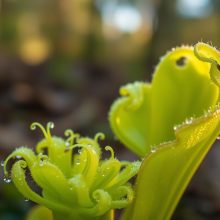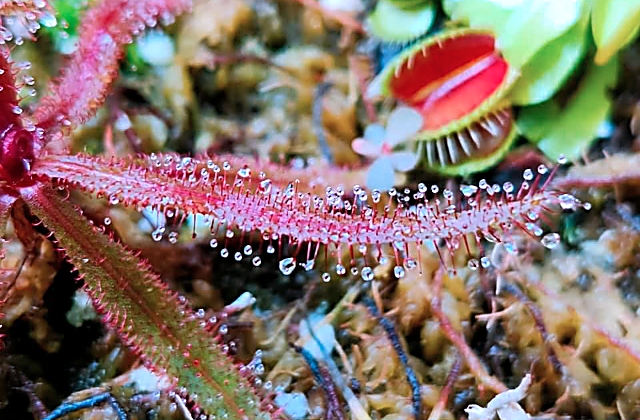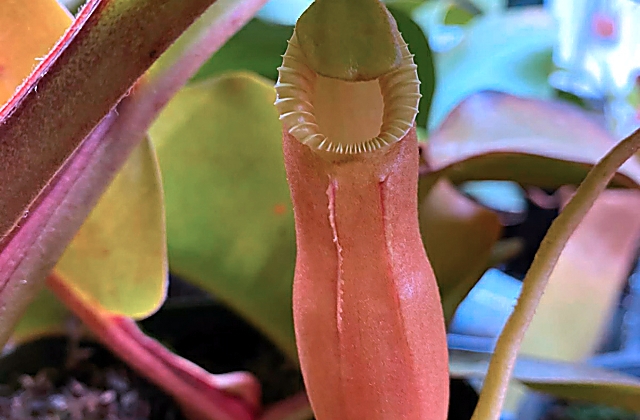Captivating Venus Flytrap: Nature’s Carnivorous Wonder
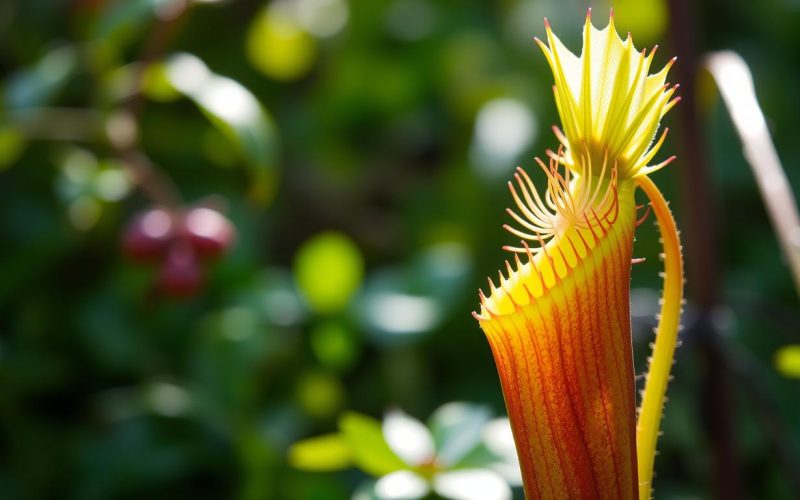
The venus flytrap is a standout in the world of plants. It’s a carnivorous plant that surprises us with its behavior. Found in the wetlands of North and South Carolina, it fascinates scientists and plant lovers everywhere.
This plant has a special way to survive. Unlike most plants, it doesn’t just photosynthesize or get nutrients from the soil. Instead, it catches and eats insects to get what it needs. Its trap works with amazing accuracy to capture and digest its prey.
The venus flytrap is also known for its ability to sense touch. Its leaves can snap shut in almost no time. This shows how responsive it is, unlike most plants.
Key Takeaways
- Venus flytraps are unique carnivorous plants native to the Carolinas
- They developed a hunting mechanism to survive in nutrient-poor environments
- The plant can rapidly close its trap in response to specific stimuli
- Each trap can close multiple times before becoming inactive
- These plants represent an extraordinary example of plant adaptation
Understanding the Venus Flytrap
The Venus flytrap is one of nature’s most fascinating plants. It captures the attention of scientists and plant lovers everywhere. Its ability to hunt and eat insects is truly remarkable.
Venus flytrap facts show us a plant that is unlike any other. It grows in a very specific area along the coasts of North and South Carolina.
What Defines This Carnivorous Plant?
The Venus flytrap is a unique carnivorous plant. It has a special trap that captures insects. The trap is made of two leaves that snap shut fast, trapping its prey.
Natural Habitat Insights
- Most wild Venus flytraps live within 50 miles of Wilmington, North Carolina
- They are mainly found in coastal wetlands
- They thrive in poor, acidic soil
- They need humid and warm conditions
Distinctive Plant Characteristics
The Venus flytrap has special traits that help it survive. It eats insects to get nutrients when the soil lacks them.
- It has trap leaves with sensitive hairs
- It can count how many times it’s triggered
- It can quickly snap shut to catch prey
- It only grows in a few places
Learning about the Venus flytrap shows us how amazing nature is. It’s a plant that has evolved to survive in tough conditions.
The Anatomy of a Venus Flytrap
The venus flytrap is one of nature’s most fascinating plants. It has a unique design that lets it catch and digest prey. Unlike most plants, it doesn’t rely on sunlight for food. Instead, it has special ways to hunt like a true predator.
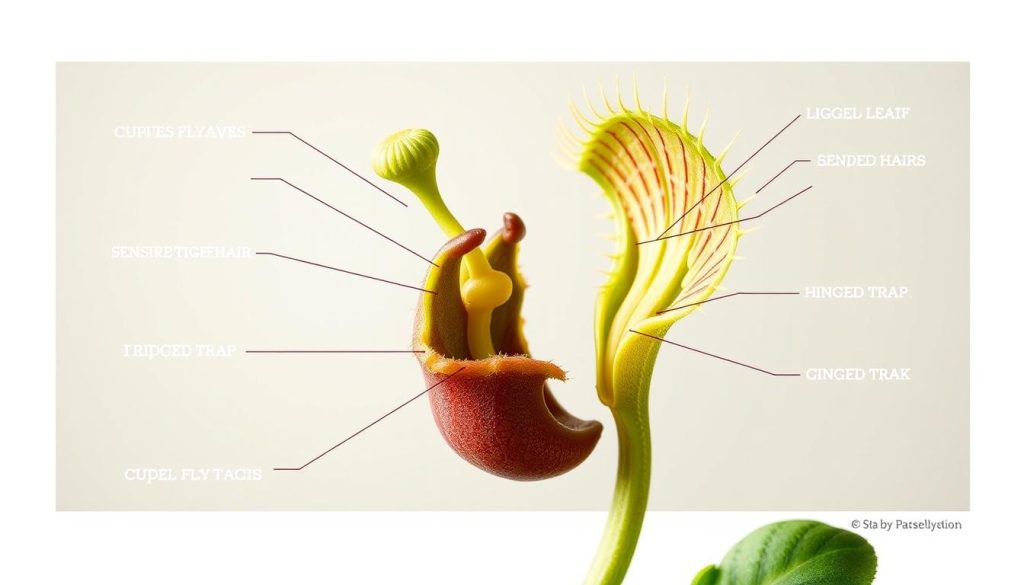
A Closer Look at the Traps
Each venus flytrap has two hinged leaves that act like a trap. These leaves are covered in sensitive hairs that feel for prey. When an insect touches these hairs a few times fast, the trap closes quickly – usually in less than a second.
- Trap dimensions typically range from 1-1.5 inches long
- Leaves contain three to six trigger hairs per lobe
- Traps can open and close approximately four to seven times during their lifetime
The Role of Nectar in Attraction
Nectar is key to the venus flytrap’s hunting plan. It makes a sweet liquid that draws insects in. This clever trick helps the plant catch its prey effectively.
The venus flytrap’s design shows how plants can adapt to survive in poor soil. It’s a true wonder of nature’s engineering.
How Venus Flytraps Catch Their Prey
Venus flytraps are amazing plants that catch their food in a unique way. They have a special method to hunt that is unlike any other plant.
These plants don’t just eat flies. They actually catch a variety of small insects. This shows how clever they are at hunting.
The Trap Mechanism
Each Venus flytrap has two hinged parts that work like a trap. When an insect touches the sensitive hairs, the trap closes in a specific way:
- First trigger causes partial closure
- Second trigger confirms live prey presence
- Trap completely seals shut
- Digestive enzymes begin breaking down the prey
Preferred Prey Selection
Venus flytraps are picky about what they eat. They prefer certain insects:
- Spiders
- Ants
- Beetles
- Small crawling insects
They even avoid eating insects that help them make seeds. This shows how smart they are at surviving.
Growing Venus Flytraps at Home
Bringing carnivorous plants like Venus flytraps into your home is exciting. These plants need special care to grow well. Knowing their needs is key to success.
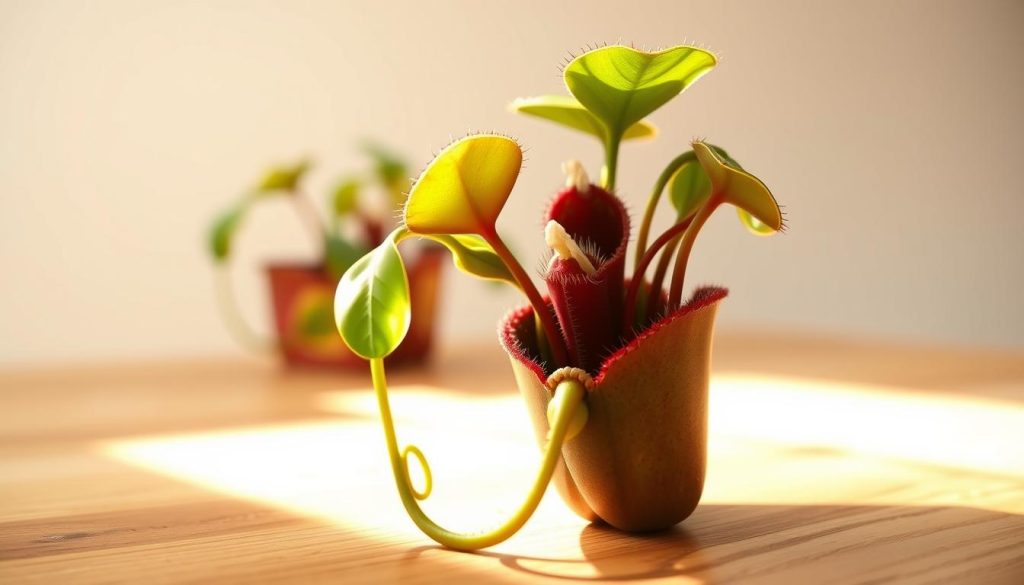
To care for Venus flytraps, start with the right environment. They need conditions similar to their natural habitat in the southeastern United States.
Ideal Growing Conditions
Here are the essential growing conditions for Venus flytraps:
- Provide 4-6 hours of direct sunlight daily
- Maintain temperatures between 70-95°F
- Keep humidity levels high (50-70%)
- Protect from cold drafts and extreme temperature changes
Potting and Soil Requirements
Venus flytraps need special soil. Use a mix designed for carnivorous plants with these features:
- Low-nutrient substrate
- Mixture of sphagnum moss and sand
- Acidic pH between 4.0-5.0
- Well-draining container with drainage holes
Watering Techniques for Success
Proper watering is crucial for Venus flytraps. Follow these tips:
- Use only distilled water or rainwater
- Keep soil consistently moist but not waterlogged
- Use the tray method for bottom watering
- Avoid tap water with mineral content
By following these care tips, you can create a perfect home for Venus flytraps to thrive.
Feeding Your Venus Flytrap
Venus flytraps are fascinating carnivorous plants with unique feeding needs. Knowing how to care for their nutrition is key to keeping them healthy. These plants can catch insects on their own, but sometimes they need a little help from us.
Feeding a Venus flytrap is simpler than many think. They’ve evolved to catch prey in the wild. But in our homes, we need to follow some specific rules.
Feeding Frequency
When feeding your Venus flytrap, remember that less is better. These plants don’t need to eat often. In fact, eating too much can hurt them. Here are some important tips:
- Feed only 1-2 insects per month
- Each trap should be fed no more than once every 2-3 weeks
- Let the plant catch its own prey when you can
Choosing the Right Food Sources
Picking the right food is crucial for feeding your Venus flytrap. Not all insects are good for these plants. Here are some suggestions:
- Choose small insects like:
- Crickets
- Mealworms
- Flies
- Avoid insects larger than 1/3 the size of the trap
- Use dead insects if you need to hand-feed
Remember, closing a trap uses a lot of energy. Using traps too much can weaken the plant. Feeding them carefully and sparingly will keep your Venus flytrap healthy and lively.
Common Myths About Venus Flytraps
Venus flytraps have captured the imagination of many. They are often surrounded by misinformation. This leads to myths about their care and abilities.
Debunking Care Misconceptions
Many myths surround venus flytraps. One common myth is that they need constant feeding or exotic care. But, venus flytrap care is actually quite simple:
- They don’t need to be fed insects all the time
- They can thrive in temperate climates, not just tropical ones
- Too much food can harm them
Feeding Myths Explained
There are also myths about their eating habits. Venus flytraps can’t just eat any food. They have specific needs:
- They only eat live insects that trigger their trap
- Meat, human food, or dead insects won’t help them
- Each trap can only snap a few times before it dies
Medical Claims Debunked
Some online sources claim venus flytraps have amazing medical benefits. But, health experts and researchers say there’s no proof. These plants are fascinating, but they can’t cure any diseases.
Knowing the truth about venus flytraps helps us care for them better. We can appreciate these unique plants for what they really are.
The Importance of Conservation
Venus flytraps face big challenges in their natural habitat. These special plants are fighting to live because of environmental dangers. These dangers threaten their home.
The facts about Venus flytraps are alarming. Their home in North Carolina is getting smaller fast. This is because of several big threats:
- Urban development taking over wetlands
- People illegally taking the plants
- Changes in fire cycles in their area
- Climate change affecting their home
Protecting a Unique Ecosystem
Experts are working hard to save the Venus flytrap habitat. State and federal programs have started important actions to protect these plants.
- Setting up protected wildlife areas
- Creating laws to stop harvesting
- Doing controlled burns to keep landscapes natural
- Supporting research and teaching the public
Community Involvement
Local groups and botanical gardens are key in saving Venus flytraps. They help by spreading the word and fixing habitats. This ensures these plants will be around for others to see.
Fun Facts About Venus Flytraps
Venus flytraps are truly fascinating plants. They have amazed scientists and nature lovers. These plants have many interesting facts that make them stand out.
A Plant with Remarkable Historical Significance
The Venus flytrap was first found by European botanists in the late 1700s. They discovered it in North and South Carolina’s coastal areas. Native American tribes knew about these plants long before.
When botanists documented them, it sparked a global interest. People were amazed by how these plants could catch and eat insects. It changed how we thought about plants.
Unique Survival Adaptations
Venus flytraps have amazing ways to survive:
- They can count how many times they are touched before closing
- They can grow back after forest fires
- They have an underground bulb for regrowth
- They can tell the difference between real prey and false triggers
Scientific Curiosity and Cultural Impact
Venus flytraps have led to many scientific studies. They show that plants can move and act in ways we never thought possible. Their unique way of hunting fascinates scientists who study how plants evolve.
Tips for Beginners
Learning to care for Venus flytraps takes time and patience. These plants often don’t last long in commercial settings. But, with the right knowledge, you can create a perfect home for them. Understanding their specific needs and solving problems early is key.
Check if your plant’s traps are green and have a red inside. Active traps are a good sign. But, weak or discolored traps mean something’s wrong. They need special soil, like pure sphagnum moss, to thrive. Regular potting soil is too rich and can harm them.
Watch out for browning leaves, which can mean too much food or wrong light. Venus flytraps love bright, indirect light and high humidity. Make sure your pot has holes to avoid waterlogged soil. Use distilled or rainwater to keep their roots safe from tap water’s minerals.
Growing Venus flytraps is a rewarding challenge. It lets you see nature’s amazing plant adaptations up close. Start small and learn as you go. With dedication, you can become an expert in caring for these unique plants.
